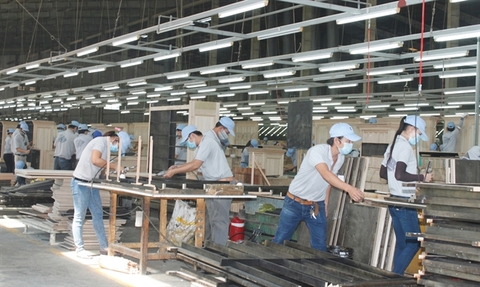Crafting procedures for successful PPP schemes
Crafting procedures for successful PPP schemes
In order to achieve its economic goals, Vietnam is trying to attract deeper investment from the private sector, with public-private partnerships considered one of the more effective tools. Nguyen Mai, vice chairman of the Vietnam Association of Foreign Invested Enterprises, writes about the importance of transparent regulations for the country, and how they can be utilised correctly in order to implement future PPP projects.According to the Asian Development Bank, Vietnam’s capital demand for infrastructure development in the 2017-2030 period is about $480 billion. This huge capital volume will come from the state budget, bond issuance, and private investors. One of the effective methods to attract investment is in public-private partnerships (PPP).
Nguyen Mai, vice chairman of the Vietnam Association of Foreign Invested Enterprises
At present, this area is regulated in Decree No.63/2018/ND-CP promulgated in 2018 on investment in the form of PPP. Nevertheless, the decree has failed to meet requirements of domestic and international investors about fairness, stability, transparency, and openness in related investment.
In order to overcome this, the government has submitted to the National Assembly a draft law on PPP, which will be discussed over the next few weeks.
Creating legal confidence
The biggest roadblocks for PPP in Vietnam is that investors do not entirely trust in legal frameworks as they have encountered a series of difficulties when implementing projects, and foreign investors have yet to join any road projects in the country.
The first requirement is a good mechanism in guaranteeing and risk sharing. Investors often exercise great caution when they select any nation for their investment. The nation must have a stable and transparent legal climate, with reliable partners for investors to co-operate with, and for it to maximise the usage of capital from the state and the investors.
A lack of the guaranteeing and risk-sharing mechanism is the biggest obstruction for investors, especially overseas ones. For domestic equivalents, the State Bank of Vietnam requires credit institutions to closely control loans for build-operate-transfer (BOT) and build-transfer projects, because commercial banks themselves also face risks when offering long-term loans, while investors are often financially weak.
As of last month, there were 30 BOT projects which could not ensure their payments for banks due to their limited revenue.
Thus, the PPP law must embrace clear regulations about guaranteeing and risk sharing when investors seek bank loans. They must have sufficient counter funding, while authorised agencies must support the projects, and the Ministry of Transport and localities’ governments must ensure the operation of toll plazas and toll-increasing roadmaps. If the project fails to collect tolls as desired, the state agencies inking the PPP contract must support investors so that they can recoup investment capital, pay bank loans, and enjoy suitable profits.
The draft PPP law assigns the government to provide details for the minimum investment volume for the PPP projects in each sector, with a minimum value of VND200 billion ($8.7 million) and is not applicable to the operations and management (O&M) contract.
The National Assembly’s Economic Committee has asked the law’s drafting board to specify the minimum investment volume for concrete sectors, and explain why the law does not stipulate the total minimum investment volume for O&M contracts. Moreover, to ensure the transparency and favourableness for inspection and auditing of projects, it is necessary to split the state-owned capital in a PPP project into a separate venture. State-owned capital in the project should be prioritised for land clearance, compensation, and resettlement.
The second requirement is that investment procedures must be quite clear and transparent. It is necessary to distinguish such procedures for capital from the state and capital from private investors, meaning that public funding procedures will be applied to capital from the state, and normal ones will be applied to private investment. These two types of capital should not share the same procedures as it will make it difficult to attract private investment.
It is also necessary to note that if PPP is seen as a business and commercial activity as per Article 112 in the draft law, some consequences will likely arise.
Firstly, the private partner will use the phrase “business and commercial secret” and then will ask the state to stamp the “secret” on the related documents, and sign security deals for the PPP projects. This will make it impossible for the public, who are the taxpayers for public services, to have access to information during negotiations for the project.
Secondly, the country’s PPP law has failed to stipulate criteria for the project in terms of providing public services. For example, the criterion can be about the volume of waste to be treated by expected technologies and water quality after it has already been treated.
Implementing PPP projects
Implementation is the weakest stage for the PPP projects because during the process, shortcomings and negative phenomena will arise, especially the unfairness in the public-private treatment which is characterised by a lack of transparency in payments via the right to use land, not via money. For the BOT project, it lacks a sound financial model. At present, such a model is always complicated because of risks in long-term investment and political and social sensitiveness of infrastructure projects.
In the PPP project, the decision-making process is the first and most important stage that can ensure the socio-economic effectiveness of the scheme. For example, debates are being seen about the construction of the North-South Expressway. Will it be developed with 6-10 lanes for long-term use, or with only 4-6 lanes as expected by the government?
We need to have a long-term vision for this project so that in the future we will not have to upgrade it, with much more investment capital.
The wastefulness in funding is caused by decision-makers who have failed to base things on a scientific approach. For example, because of the lack of long-term visions, the international airports of Noi Bai in Hanoi and Tan Son Nhat in Ho Chi Minh City are now being expanded because they have become completely overloaded.
It is hoped that the development of the expressway and all airports will be conducted systematically and comprehensively.
After the decision-making process, it is also necessary to take into account human resources based on a feasibility study, so that projects can be implemented as scheduled, with high quality and socio-economic effectiveness. It is also required to prevent a situation in which the project is implemented without sufficient capital or it has to increase investment capital due to incompetent contractors.
Besides that, the capacity of bidding agencies must also be improved. State agencies participating in the bidding process need to be transparent across all information, and be more professional in appraising projects and selecting contractors.
They also need to boost inspection and supervision of the projects’ implementation process. When difficulties arise, they must quickly support the contractors so that the projects can be carried out smoothly.
In addition, there also need to be effective mechanisms for social organisations, economic and legal experts, and inhabitants to partake in the implementation of PPP projects.
Another important point for such initiatives is to select competent contractors who have high-quality human resources, technology, equipment, and machinery, as well as expertise and skills in constructing the projects with suitable costs.
The most important criterion for them is that they have directly deployed a number of similar projects earlier with high quality and suitable costs, and that they meet all deadlines required. Any contractor that violates the PPP contract must be removed.
During the process of consideration, there are often two tools which can be used, including the project impact assessment and the project feasibility study conducted by independent organisations.
Although PPP boasts many strong points, before implementing any specific project, authorised agencies must make plans for comparison between public investment and procurement and PPP in order to ensure their accountability. Furthermore, they should make investment decisions when they see the benefits from that project.



















